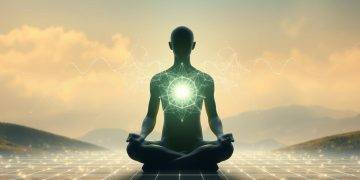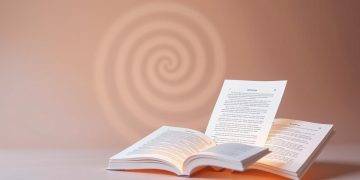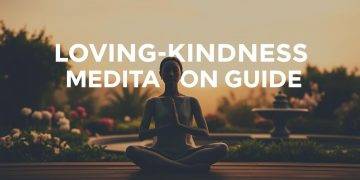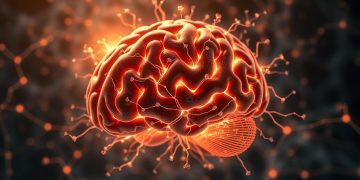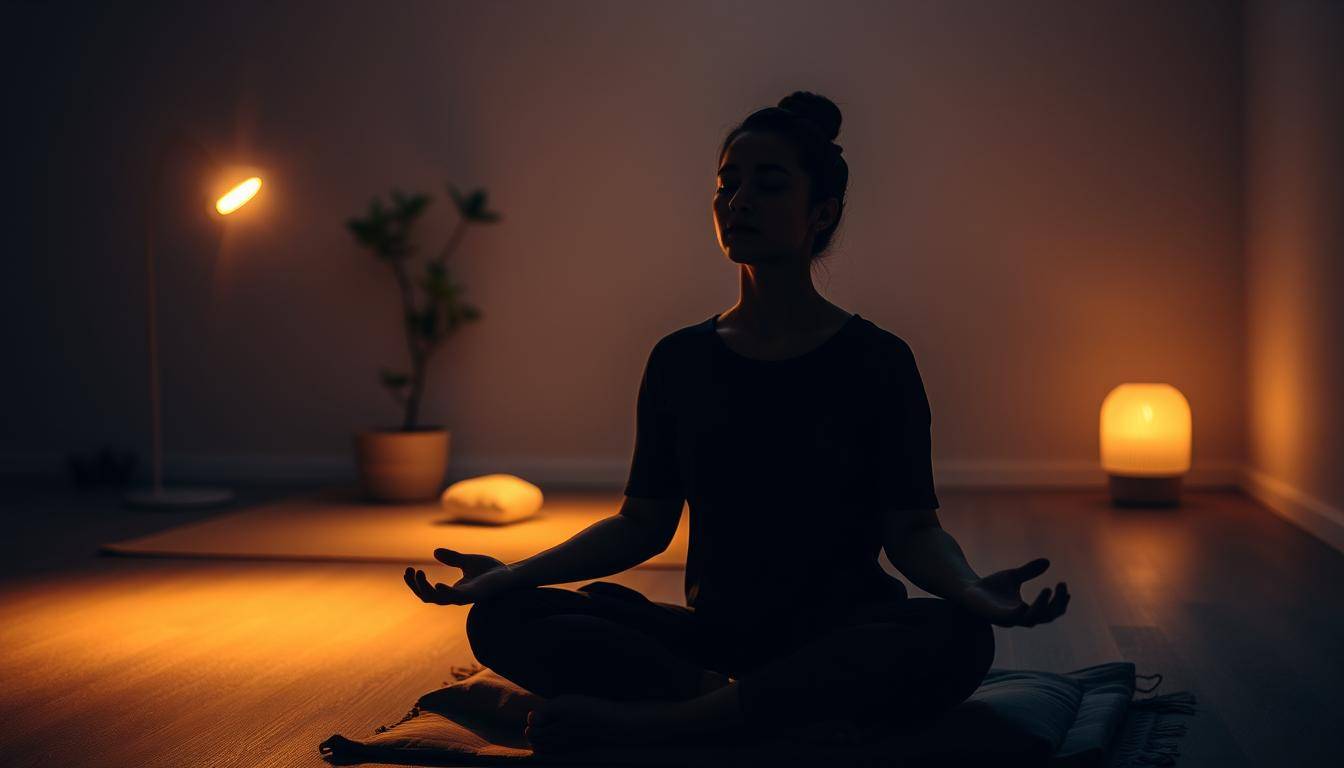“The little things? The little moments? They aren’t little.” Jon Kabat-Zinn’s timeless words perfectly introduce this mindfulness technique reshaping modern self-care. Developed through decades of clinical research, this practice offers more than temporary relaxation—it builds lasting connections between mind and physical being.
Originally refined in mindfulness-based stress reduction programs, this method helps practitioners identify tension patterns often overlooked in daily life. Dr. Melissa Young describes it as “a conversation with your physical self”—a systematic approach to decoding sensations from head to toe.
What makes this technique stand out? Unlike complex meditation forms requiring special training, it adapts seamlessly to busy schedules. You simply focus attention progressively through different regions, observing without judgment. This process cultivates what experts call somatic intelligence—the ability to interpret bodily signals before they escalate into health concerns.
Recent studies reveal fascinating outcomes: regular practitioners show measurable improvements in stress hormone levels and pain management. More importantly, they report heightened emotional clarity in decision-making—proof that ancient wisdom and modern science converge in powerful ways.
Key Takeaways
- Originated from clinical mindfulness programs in the 1970s
- Helps identify physical tension and emotional patterns
- Requires no prior meditation experience
- Reduces measurable stress markers
- Enhances mind-body communication
- Adaptable to various time constraints
- Supports chronic condition management
What is Body Scan Awareness?
Emerging from Eastern contemplative traditions, this technique gained clinical credibility through groundbreaking 1970s research. Jon Kabat-Zinn’s work transformed ancient mindfulness into a structured therapeutic tool, creating what we now recognize as modern body scan meditation. “It’s not about fixing—it’s about noticing,” explains Dr. Melissa Young, summarizing its non-judgmental approach.
Origins of the Practice
Kabat-Zinn’s Mindfulness-Based Stress Reduction program became the catalyst. By blending Buddhist Vipassana techniques with Western psychology, he created a systematic method for decoding physical signals. This fusion addressed a growing need: reconnecting busy minds with neglected physical experiences.
Understanding Its Core Principles
The practice operates on three pillars:
| Aspect | Traditional Approach | Modern Adaptation |
|---|---|---|
| Focus | Spiritual enlightenment | Stress reduction |
| Method | Hours-long sessions | 10-20 minute exercises |
| Outcome | Self-realization | Somatic intelligence |
Unlike focused concentration, this technique uses receptive attention—observing sensations without analysis. You might notice warmth in your hands or tension in your shoulders, simply acknowledging these signals. Studies show this cultivates emotional clarity, with 68% of regular practitioners reporting better stress management within 8 weeks.
Key differentiators include its emphasis on curiosity over correction and its adaptability to modern lifestyles. Whether during a lunch break or before bed, the method meets practitioners where they are—physically and mentally.
Step-by-Step Body Scan Meditation Guide
Mastering this practice starts with intentional preparation. Chris Saranchock, a leading mindfulness coach, emphasizes that “success lies in the setup”—creating ideal conditions for focused attention before beginning the journey through your physical self.
Getting Comfortable and Settling In
Begin by finding your anchor position. Choose between lying flat with palms facing upward or sitting tall with feet grounded. Close your eyelids lightly—like curtains at intermission—to minimize visual distractions. Take three deliberate breaths through your nose, letting each exhale through parted lips soften your shoulders like melting butter.
Navigating Your Body from Head to Toe
Start at your feet, noticing textures against socks or floor surfaces. Imagine your breath as a gentle spotlight moving upward—knees, thighs, hips. Pause at your stomach area, where emotions often ripple like pond water. Continue to your chest, observing the natural dance of inhalation and exhalation.
Progress to hands and fingers, sensing temperature variations or subtle vibrations. When reaching your neck and jaw—common stress reservoirs—visualize tension dissolving with each outward breath. Dr. Young suggests “treating each sensation as a curious discovery, not a problem to solve.”
Finish by expanding awareness to your entire physique. Notice how different regions communicate—a symphony of signals revealing more than isolated parts ever could. This complete circuit typically takes 15-20 minutes but remains effective even in abbreviated 5-minute versions for busy schedules.
Benefits of Body Scan Meditation for Stress Relief and Health
Modern science now confirms what ancient traditions long understood: intentional focus on physical sensations creates transformative effects. This practice offers more than momentary calm—it rewires how we process life’s pressures.
Reducing Stress and Enhancing Relaxation
When stress triggers fight-or-flight responses, this technique activates the parasympathetic nervous system like a biological reset button. “You’re not eliminating stressors—you’re changing how your system responds,” notes Dr. Melissa Young. Within minutes, heart rate variability improves, signaling the body’s shift into recovery mode.
Regular practitioners experience measurable changes. Cortisol levels drop by an average of 18% after eight weeks of daily sessions. Sleep quality often improves as muscle tension decreases, particularly in common stress zones like shoulders and jaw muscles.
The method’s real power lies in prevention. By noticing subtle discomfort during desk work or commute tension early, you can adjust posture or breathing before headaches develop. This proactive approach explains why 74% of users report fewer stress-related doctor visits within six months.
Chronic pain management shows particular promise. Studies reveal participants using brief daily scans experience 23% less pain interference in daily activities. The practice teaches non-reactive observation—acknowledging discomfort without amplifying it through mental resistance.
Cardiovascular systems benefit too. Deepened breathing during sessions oxygenates blood more effectively, while reduced muscle stiffness supports healthier circulation. These combined effects create lasting changes that extend far beyond meditation time.
Enhancing Mindfulness and Self-Compassion through Body Scan Awareness

Cultivating self-compassion begins with recognizing how we respond to discomfort. This technique trains practitioners to meet physical sensations with curiosity rather than criticism. “It’s like learning a new language—the vocabulary of self-kindness,” observes Dr. Melissa Young.
Regular mindfulness meditation creates space between reactions and responses. When frustration arises during practice—as minds wander or tension surfaces—people learn gentle redirection. This builds emotional resilience that transfers to daily challenges.
Studies show 68% of participants develop healthier relationships with their physical experiences within eight weeks. The process works by syncing mental focus with bodily signals. Neutral sensations become anchors to the present moment, while discomfort transforms into opportunities for growth.
Three key shifts occur through consistent practice:
- Physical tension becomes a messenger rather than an enemy
- Emotional patterns reveal themselves through bodily cues
- Self-talk evolves from judgmental to supportive
This approach proves particularly transformative for those struggling with self-acceptance. By observing feelings without resistance, practitioners often discover hidden strengths. The meditation acts as a mirror, reflecting how kindness toward physical experiences naturally extends to personal relationships and life challenges.
Practical Tips for Integrating Body Scan into Daily Life
Consistency transforms occasional mindfulness into lasting habits. Dr. Melissa Young emphasizes: “The magic happens when practice meets real-world application.” With strategic adjustments, this technique becomes a natural part of daily routines rather than an added task.

Quick Practices for Busy Moments
Turn transitional moments into mindful check-ins. Before opening emails or answering calls, pause for a 30-second focused attention exercise. Notice three distinct sensations—perhaps your chair’s texture or your breath’s rhythm. Dr. Young suggests: “Visualize tension melting like ice in sunlight during stressful events.”
Overcoming Common Challenges
Adaptation proves key for sustained practice. Beginners often face hurdles like time constraints or mental distractions. The table below contrasts common obstacles with actionable solutions:
| Challenge | Solution | Benefit |
|---|---|---|
| Limited time | 60-second micro-scans | Maintains consistency |
| Restlessness | Walking meditation | Enhances focus |
| Perfectionism | “Good enough” approach | Reduces pressure |
| Physical discomfort | Position adjustments | Improves comfort |
Set gentle reminders using phone alarms or sticky notes. Pair the method with existing habits—try a two-minute check while brewing coffee. Over time, these small efforts compound into significant mental shifts.
Conclusion
In a world where stress often feels like background noise, body scan meditation offers a reset button for modern living. This practice meets you where you are—whether battling workplace anxiety or seeking deeper self-connection—by transforming fleeting moments into opportunities for renewal.
Regular engagement with this technique builds mental resilience through simple yet profound shifts. Studies confirm measurable improvements in stress management and emotional regulation, with many practitioners reporting better sleep and focus within weeks. The magic lies in its adaptability: a five-minute check-in during lunch or a full session before bed delivers cumulative benefits.
As research continues validating its effects, one truth remains clear. Body scan meditation isn’t about achieving perfection—it’s about cultivating presence. Each intentional breath creates space between life’s pressures and your response, empowering healthier choices.
Ready to experience the change? “Start small, stay consistent, and let curiosity guide you,” advises mindfulness expert Dr. Melissa Young. With no special equipment or experience needed, this practice invites everyone to reclaim their well-being—one conscious moment at a time.
FAQ
How does body scan awareness differ from regular meditation?
Unlike traditional techniques that focus on breath or mantras, this practice directs attention systematically through physical sensations. It builds mindfulness by anchoring awareness to the present moment while fostering deeper mind-body connections.
Can beginners benefit from short sessions?
Absolutely. Even 5–10 minutes daily helps train focus and reduce stress. Apps like Headspace or Calm offer guided sessions for newcomers. Consistency matters more than duration—small steps create lasting habits.
Does this practice help with chronic pain?
Research shows it can reframe pain perception by reducing emotional reactivity. By observing discomfort without judgment, individuals often experience decreased tension and improved coping strategies. Always consult a healthcare provider for medical conditions.
What if I get distracted during the scan?
Distractions are natural. Gently return attention to the body part you’re focusing on. Over time, this strengthens mental resilience—a key benefit of mindfulness training.
Are there specific times of day that work best?
Morning sessions set a calm tone, while evening practices aid sleep by releasing stored tension. Experiment to find what suits your rhythm. Even midday “micro-scans” of tense areas like shoulders or jaw offer quick relief.
How does body scanning improve emotional health?
By noticing physical cues linked to emotions—tight chests or clenched fists—you gain insight into stress triggers. This awareness fosters self-compassion, helping you respond thoughtfully instead of reacting impulsively.
Can I combine it with other relaxation techniques?
Yes. Pair it with deep breathing, progressive muscle relaxation, or yoga nidra for amplified effects. Many find journaling post-scan enhances reflection on bodily sensations and emotional patterns.
Is specialized equipment needed?
None required. A quiet space and comfortable position—seated or lying—are sufficient. Use supportive cushions or blankets if needed. Wear non-restrictive clothing to avoid distractions.
